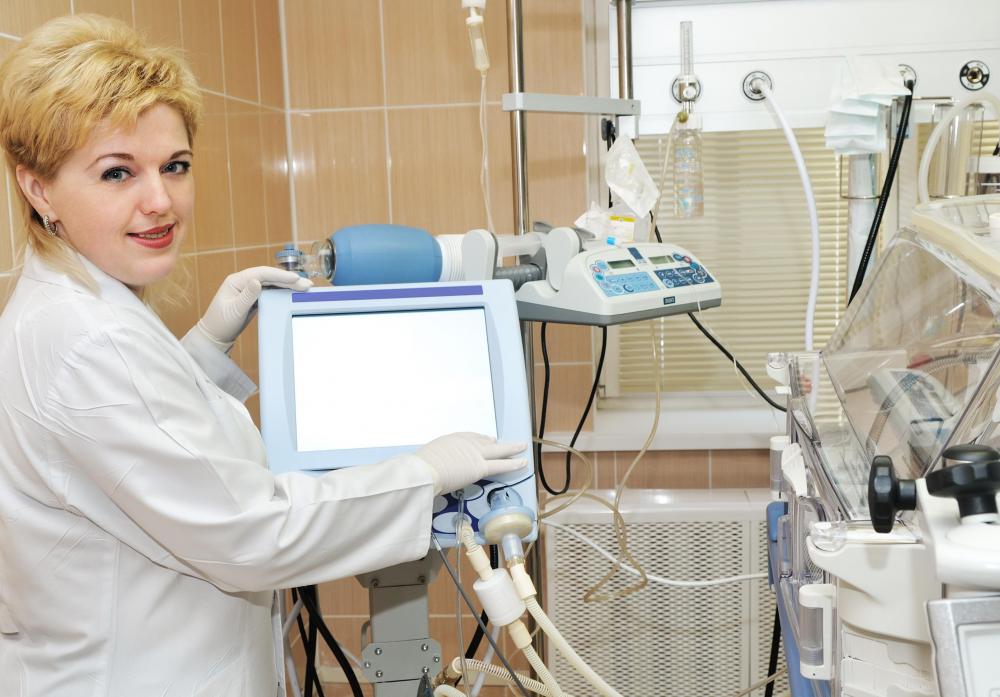At TheHealthBoard, we're committed to delivering accurate, trustworthy information. Our expert-authored content is rigorously fact-checked and sourced from credible authorities. Discover how we uphold the highest standards in providing you with reliable knowledge.
What is Ventilation Pressure?
Ventilation pressure is one of the settings on a ventilator, a medical device which is used to help someone breathe when he or she cannot do so independently, or to manage a patient's breathing during anesthesia. Controlling ventilation pressure is critical, as pressure which is too low will render the ventilator ineffective, and pressures which are too high can result in trauma to the lungs. Many medical practitioners follow established standards when it comes to determining the most appropriate ventilation pressure, adjusting the pressure as needed to meet the needs of the patient.
Most ventilators use positive pressure ventilation, in which pressure in the airway is increased with the use of the ventilator to force air into the lungs. In negative pressure ventilation, an area of decreased pressure is created around the chest to pull air into the lungs. Negative pressure ventilation requires the patient's chest to be in a chamber so that the negative pressure can be created, which is extremely cumbersome. For this reason, positive pressure ventilation is generally preferred.

When a patient is connected to a ventilator, a medical practitioner sets what is known as the tidal volume, determining how much air will be inhaled and exhaled with the assistance of the ventilator. The higher the tidal volume, the higher the ventilation pressure needs to be, to force all of the air into the lungs. The doctor must strike a balance between a pressure which is too high and potentially dangerous, and a pressure which is too low, which could deprive the patient of air.

Ventilation pressure is clearly written on the patient's chart, and the chart includes any notes about the patient's performance on the ventilator and changes made to the ventilator settings to meet the needs of the patient. Ventilation pressure can also be part of the prescription for a continuous positive airway pressure (CPAP) machine used to treat a patient with sleep apnea. The patient adjusts the settings on the device to comply with the doctor's prescription, with the doctor's prescription being based on the patient's needs and performance in a sleep lab.
Being on a ventilator can be dangerous for a patient, even when the ventilation pressure is appropriate. Ventilators are associated with a number of complications which lead medical practitioners to avoid using them whenever possible, and to keep sessions on a ventilator brief. Patients must also be sedated as long as they are hooked up to a ventilator, because otherwise they will instinctively fight the tube used to keep the airway open so that the ventilator can function.
AS FEATURED ON:
AS FEATURED ON:












Discuss this Article
Post your comments